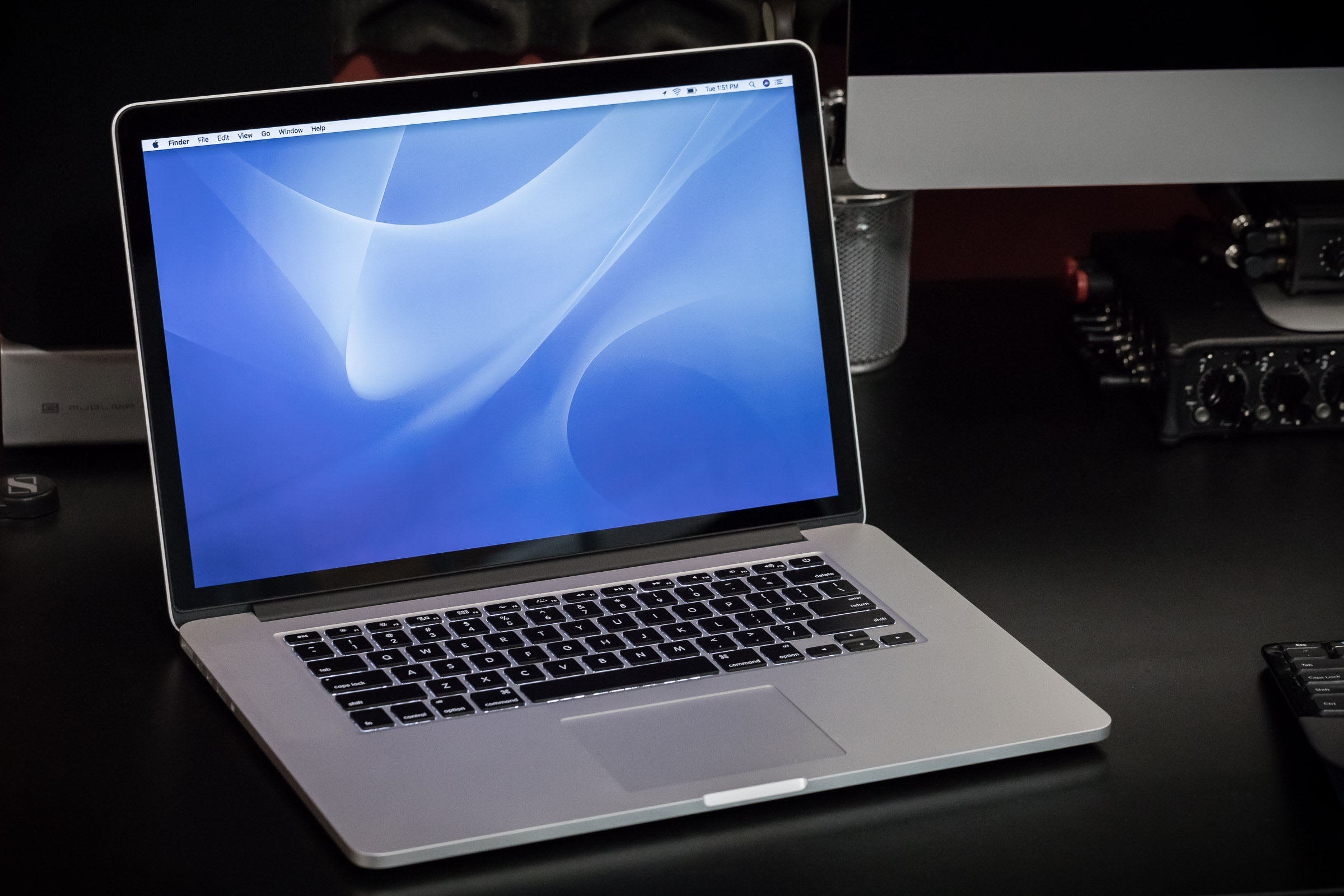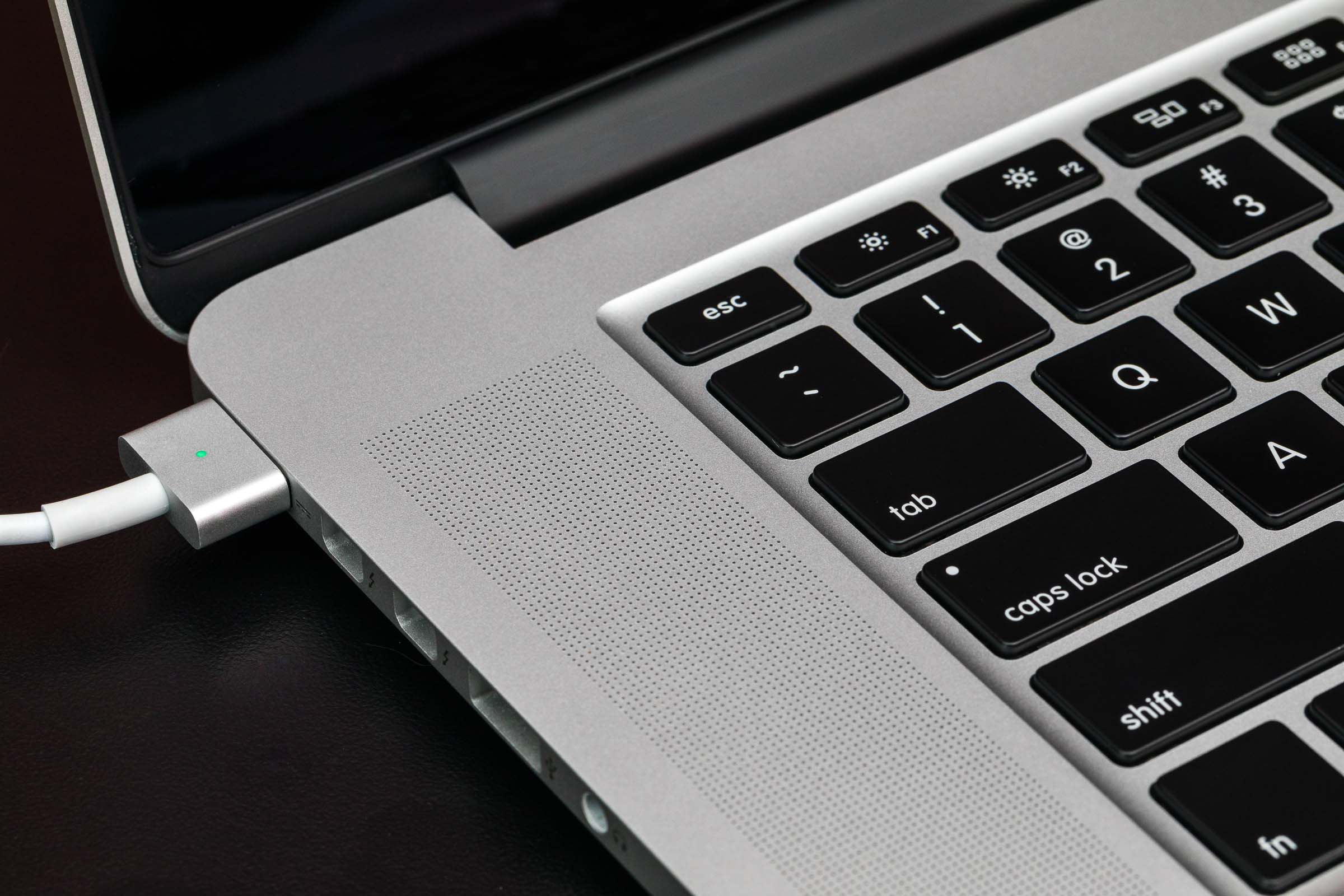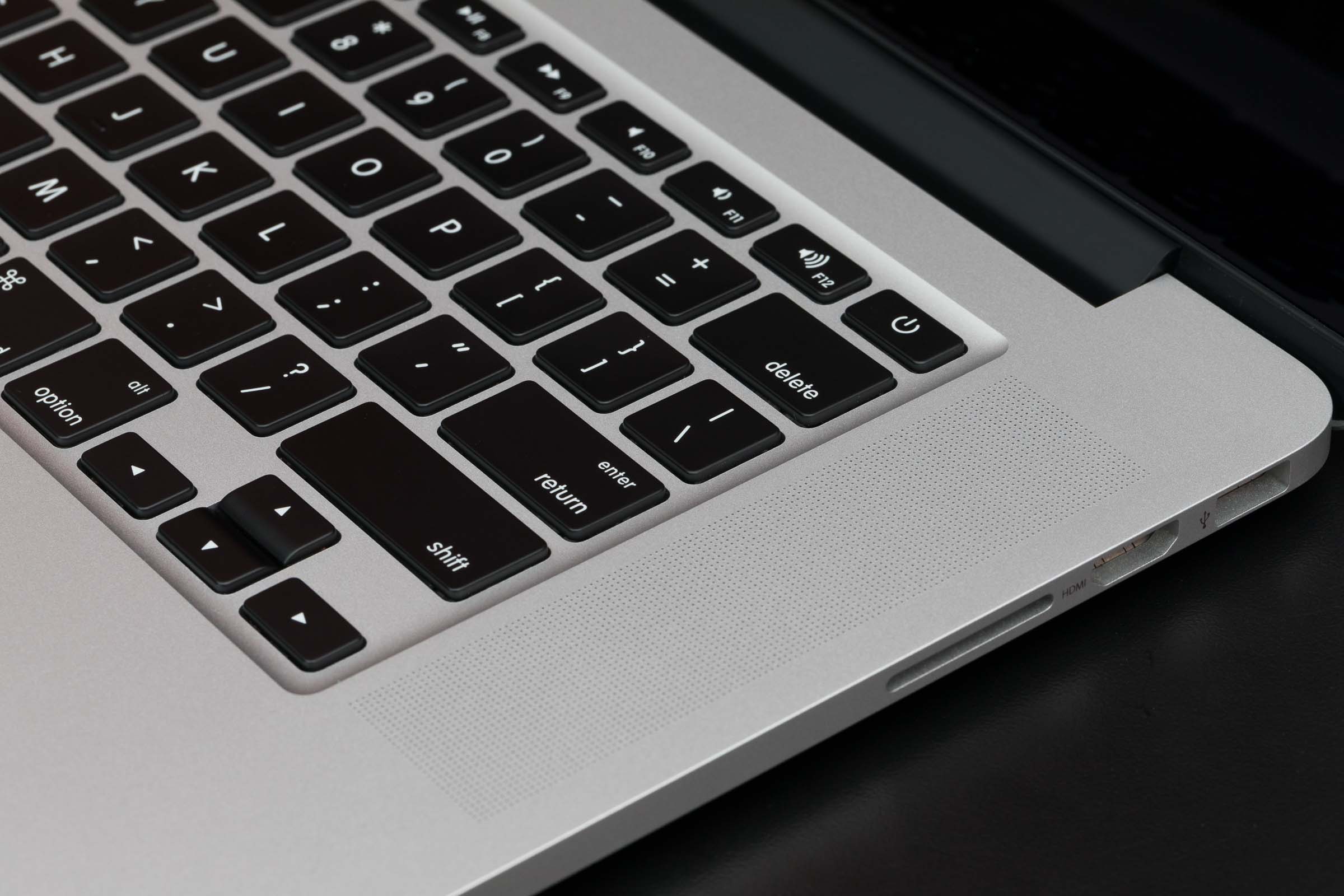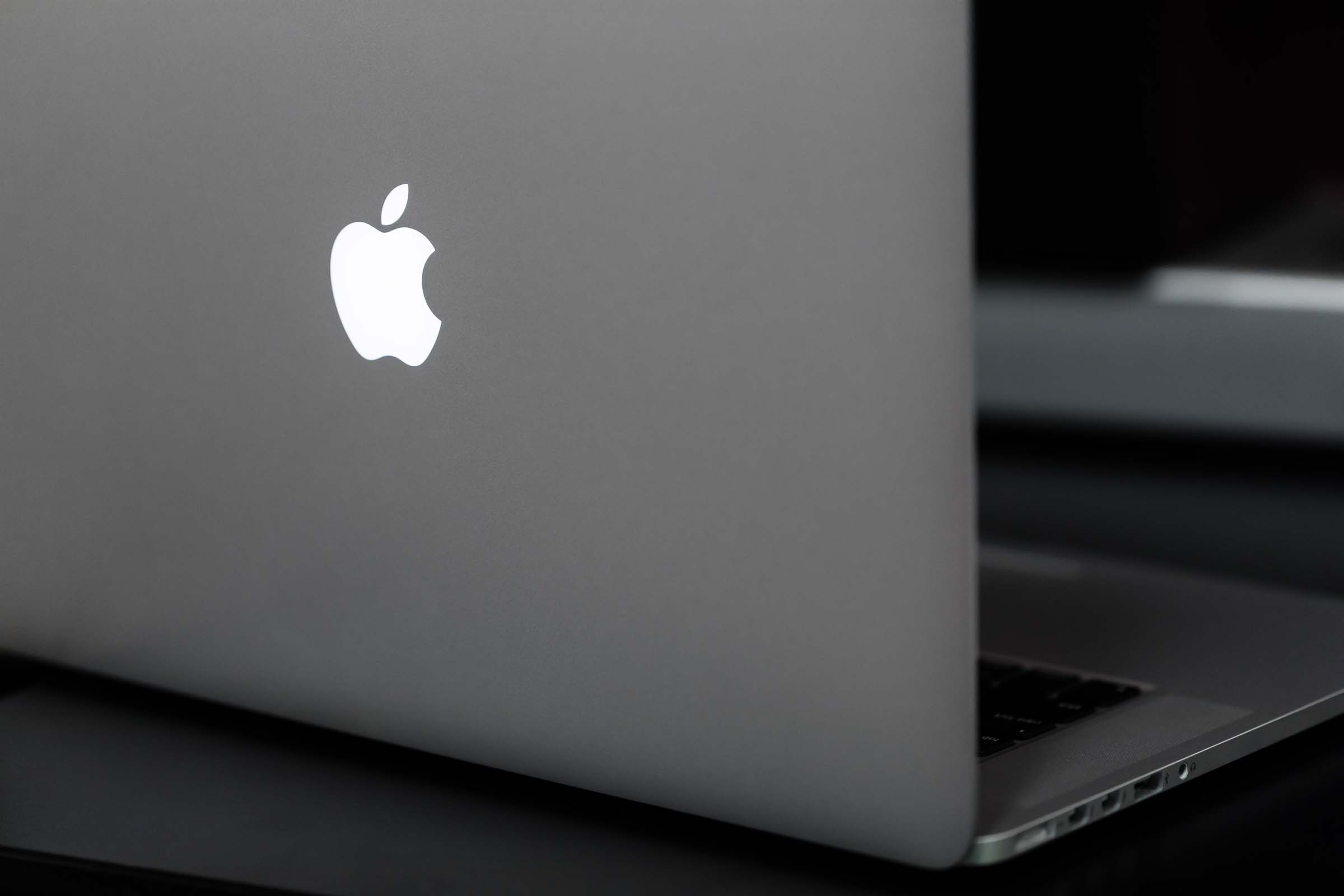Apple has made many great laptops, but the 15-inch Retina MacBook Pro (2012–2015) is the epitome of usefulness, elegance, practicality, and power for an overall package that still hasn’t been (and may never be) surpassed.
Introduced in 2012, less than a year after Steve Jobs died, I see it as the peak of Jobs’ vision for the Mac.
It was the debut of high-DPI Macs, starting down the long road (which we still haven’t finished) to an all-Retina lineup. And with all-SSD storage, quad-core i7 processors, and a healthy amount of RAM all standard, every configuration was fast, capable, and pleasant to use.
At its introduction, it was criticized only for ditching the optical drive and Ethernet port, but these were defensible, well-timed removals: neither could’ve even come close to physically fitting in the new design, very few MacBook Pro users were still using either on a regular basis, and almost none of us needed to buy external optical drives or Ethernet adapters to fit the new laptop into our lives. In exchange for those removals, we got substantial reductions in thickness and weight, and a huge new battery.
There were no other downsides. Everything else about this machine was an upgrade: thinner, lighter, faster, better battery life, quieter fans, better speakers, better microphones, a second Thunderbolt port, and a convenient new HDMI port.
The MagSafe 2 power adapter breaks away safely if it’s tripped over, and the LED on the connector quickly, clearly, and silently indicates whether it’s charging and when the battery is fully charged.
The pair of Thunderbolt (later Thunderbolt 2) ports gave us high-end, high-speed connectivity when we needed it, and the pair of standard USB 3 ports — one on each side — let us connect or charge our world of standard USB devices.
The headphone jack was thoughtfully located on the left side, because nearly all headphones run their cables down from the left earcup. (External-mouse users also appreciate this frequently-used cable not intruding in their right-side mousing area.)
The keyboard was completely unremarkable, in the best possible way. The crowd-pleasing design was neither fanatically loved nor widely despised. It quietly and reliably did its job, as all great tools should, and nobody ever really had to think about it.
The trackpad struck a great balance between size and usability. It provided ample room for multitouch gestures, but without being too large or close to the keyboard, so people’s fingers wouldn’t inadvertently brush against it while typing.
Not every owner needed the SD-card slot or HDMI port, but both were provided for times when we might. This greatly increased the versatility and convenience of this MacBook Pro, as many pro customers use A/V gear that records to SD cards or occasionally need to plug into a TV or projector. The SD-card slot could also serve as inexpensive storage expansion.
The power adapter’s built-in cable management keeps bags tidy. And if you need a longer cable, the extension comes in the box at no additional charge.
Versatile USB-A ports allow travelers to standardize on just one type of charging cable that can charge their iPhones and iPads from the laptop itself, multi-port wall or car chargers, portable batteries, airplanes, many outlets, and nearly all other chargers likely to be found in the world around them.
The 2015 revision brought the modern Force Touch trackpad and used the space savings to increase the battery to 99.5 Wh, just under the 100 Wh carry-on limit for most commercial airlines. When paired with the integrated-only GPU base configuration, this offered an unparalleled option for great battery life without giving up the large Retina screen.
And I like the backlit Apple logo on the lid. Maybe I’m old-fashioned, or maybe I just miss Steve, but it — along with the MagSafe LED and the startup chime — reminds me of a time when Mac designs celebrated personality, humanity, and whimsy.
* * *
I recently returned to the 2015 15-inch MacBook Pro after a year away.
Apple still sells this model, brand new, just limited to the integrated-only GPU option (which I prefer as a non-gamer for its battery, heat, and longevity advantages), but I got mine lightly used for over $1000 less.
I thought it would feel like a downgrade, or like going back in time. I feared that it would feel thick, heavy, and cumbersome. I expected it to just look impossibly old.
It didn’t.
It feels as delightful as when I first got one in 2012. It’s fast, capable, and reliable. It gracefully does what I need it to do. It’s barely heavier or thicker, and I got to remove so many accessories from my travel bag that I think I’m actually coming out ahead.
It feels like a professional tool, made by people who love and need computers, at the top of their game.
It’s designed for us, rather than asking us to adapt ourselves to it.
It helps us perform our work, rather than adding to our workload.
This is the peak. This is the best laptop that has ever existed.
I hope it’s not the best laptop that will ever exist.
Despite my love for the previous Retina MacBook Pro, I won’t be able to use it forever. The best laptop to ever exist should be in the future, not the past.
There’s a lot to like about the new MacBook Pros, but they need some changes to be truly great and up to Apple’s standards.
Here’s what I’m hoping to see in the next MacBook Pro that I believe is technically possible, reasonable, widely agreeable, and likely for Apple to actually do, in descending order of importance:
Magic Keyboard
Butterfly keyswitches are a design failure that should be abandoned. They’ve been controversial, fatally unreliable, and expensive to repair since their introduction on the first 12” MacBook in early 2015. Their flaws were evident immediately, yet Apple brought them to the entire MacBook Pro lineup in late 2016.
After three significant revisions, Apple’s butterfly keyswitches remain as controversial and unreliable as ever. At best, they’re a compromise acceptable only on the ultra-thin 12” MacBook, and only if nothing else fits. They have no place in Apple’s mainstream or pro computers.
The MacBook Pro must return to scissor keyswitches. If Apple only changes one thing about the next MacBook Pro, it should be this. It’s far more important than anything else on this list.
Fans of the butterfly keyboard’s feel need not worry — this doesn’t mean we need the old MacBook Pro keyboard, exactly.
The Magic Keyboard’s scissor switches feel similar, but with a bit more travel, and all of the reliability and resilience of previous keyboard generations. They’re a much better, more reliable, and more repairable balance of thinness and typing feel likely to appeal to far more people — even those who like the butterfly keyboards.
The Magic Keyboard only needs one change to be perfect for the MacBook Pro: returning to the “inverted-T” arrow-key arrangement by making the left- and right-arrow keys half-height again. This arrangement is much more natural and less error-prone because we can align our fingers by feeling the “T” shape, a crucial affordance for such frequently used keys that are so far from the home row.
Great first-party USB-C hubs
The MacBook Pro bet heavily on the USB-C ecosystem, but it hasn’t developed enough on its own.
When people can’t get what they need from Apple at all, or at a remotely competitive price, they’ll go to cheap third-party products, which are often unreliable or cause other problems. When these critical accessories aren’t flawless, it reflects poorly on Apple, as it harms the overall real-world experience of using these computers.
If a third-party hub or dongle is flaky, the owner doesn’t blame it — they blame their expensive new Apple computer for needing it.
Apple needs to step up with its own solid offerings to offer more ports for people who need them.
Apple’s most full-featured USB-C accessory is downright punitive in its unnecessary minimalism: one USB-C passthrough, one USB-A (a.k.a. regular/old USB), and an HDMI port that doesn’t even do 4K at 60 Hz — all for the shameless price of $80.
Instead of giving us the least that we might possibly need, this type of product should give us the most that can fit within reasonable size, cost, and bandwidth constraints. I’d like to see at least two USB-C ports, at least two USB-A ports, and HDMI that can do 4K60. An SD-card reader would be a nice bonus.
To make it easier to go all-USB-C on our peripherals and cables, I’d also like to see a true USB-C hub: one USB-C in and at least three USB-C out, with power passthrough on one.
And just as we learned that the need for pro displays shouldn’t be outsourced to LG, Apple should stop outsourcing critical adapters and hubs to Belkin. They’re not as good as Apple’s, and they never will be.
More ports
USB-C is great, but being limited to 2 or 4 total ports (including power) simply isn’t enough. Even if you adopt the USB-C ecosystem, these MacBook Pros are more limited than their predecessors:
- The 13” MacBook Air can connect to power, two USB devices, Thunderbolt, and an SD card simultaneously. Its replacement, the 13” MacBook “Escape” (without Touch Bar), can only connect to two total devices on battery, or one when powered.
- The 2015 13” and 15” MacBook Pros can connect to power, two USB devices, two Thunderbolt devices, HDMI output, and an SD card simultaneously. Their replacements can only connect to four devices on battery, or three when powered.
If there’s not enough Thunderbolt or PCIe bandwidth to have more USB-C ports, that’s fine — not every port needs to be USB-C with Thunderbolt. All of that cost and bandwidth is unnecessary for most common real-world uses of laptop ports (power in, charging iPhones, external keyboards, etc.).
Dongles should be the exception, not the norm, in real-world use — most owners should need zero. But HDMI and USB-A are still far too widely used to have been removed completely, and neither are likely to fade away anytime soon regardless of how Apple configures their laptops. Re-adding HDMI and at least one USB-A port would reduce or eliminate many people’s dongle needs, which I bet would dramatically improve their satisfaction.
Finally, Apple should give serious consideration to bringing back the SD-card slot. SD cards are more widely used than ever in photography, video, audio, and other specialized equipment, and they provide excellent options for fast, reliable storage expansion and data transfer. And they’re going to be around for a while — Wi-Fi and cables don’t or can’t replace most current uses in practice.
Back away from the Touch Bar
Sorry, it’s a flop. It was a solid try at something new, but it didn’t work out. There’s no shame in that — Apple should just recognize this, learn from it, and move on.
The Touch Bar should either be discontinued or made optional for all MacBook Pro sizes and configurations.
Touch ID is the only part of the Touch Bar worth saving, but the future is clearly Face ID. If we can’t have that yet, the ideal setup is Touch ID without the Touch Bar. We’d retain the Secure Enclave’s protection for the camera and microphones, and hopefully get the iMac Pro’s boot protection, too.
Nicer charger
USB-C PD charging and replaceable charging cables are great advances that should be kept. USB-C PD is the reason I didn’t include battery life in this list — occasional needs for extended battery life can be achieved with inexpensive USB-C PD batteries.
But Apple could make their chargers and cables so much nicer — and they only need to look to their own recent past.
I’d like to see them bring back the charging LED on the end of the cable, and the cable-management arms on the brick. These weren’t superfluous — they served important, useful functions, and their removal made real-world usability worse for small, unnecessary gains.
MagSafe would be nice, but I don’t think it’s essential. MagSafe 2 wasn’t universally loved because it detached with too little vertical pressure when used on laps, couches, or beds, but maybe it could be moved to a splitting module along the cable, a few inches from the laptop end, like the original Xbox’s controller cables?
The move to a detachable, “standard” USB-C cable doesn’t preclude any of this. It’s already a specialized, dedicated power-only cable in practice (high-wattage USB PD support, but no Thunderbolt, and limited to USB 2.0 speeds). Third-party cables could still work — Apple’s could just be nicer.
Keeping what’s great
There’s a lot about the current MacBook Pro that’s great — fast internals, quieter fans, Touch ID, P3 screens, Thunderbolt 3, USB-C PD charging, and space gray, to name a few.
We shouldn’t have to choose between what’s better about the previous generation — connectivity, reliability, and versatility — and what’s great about this one.




